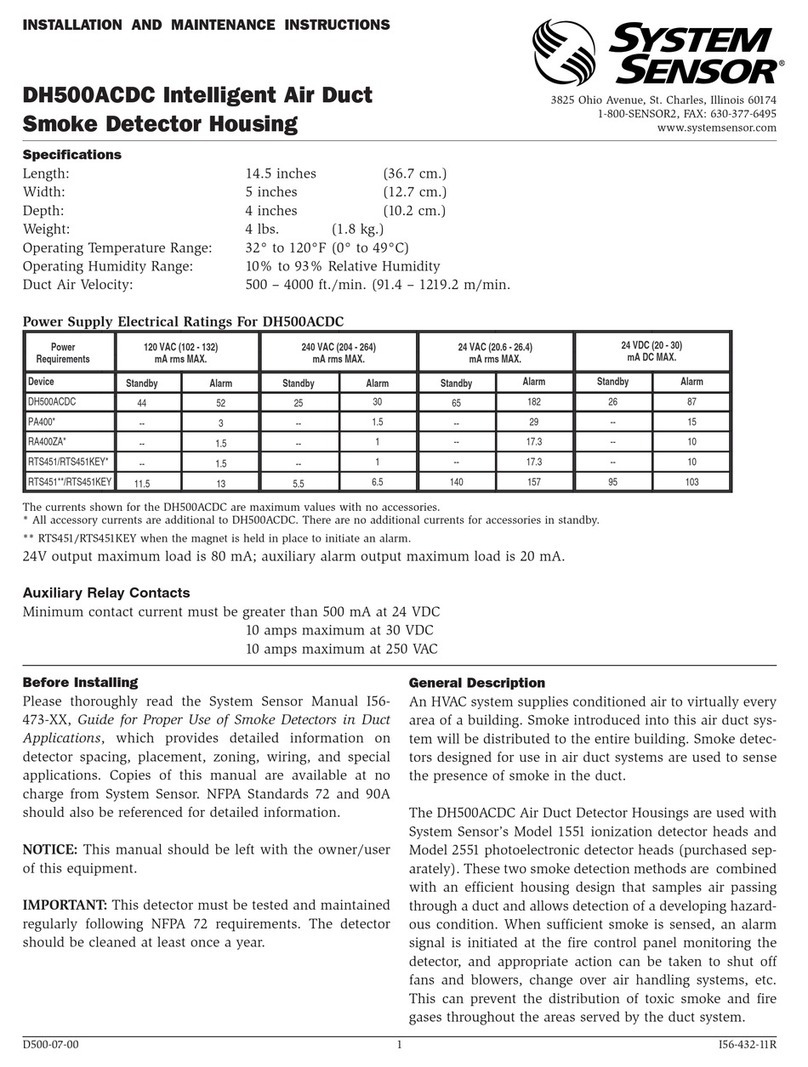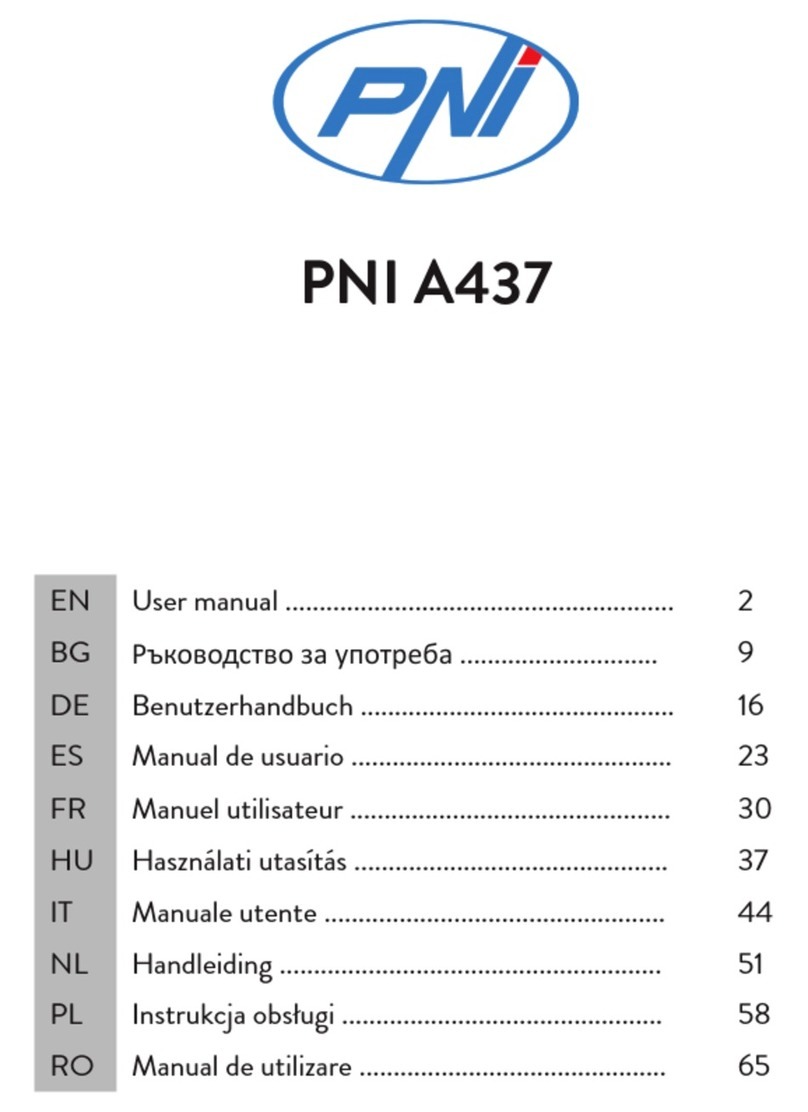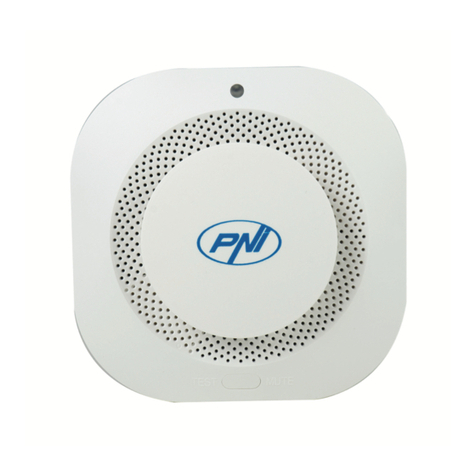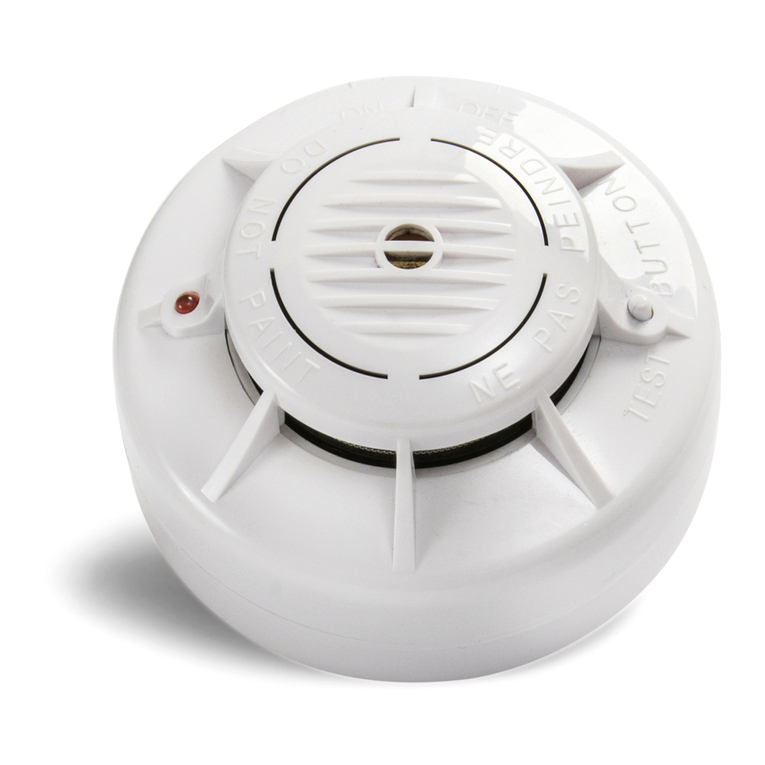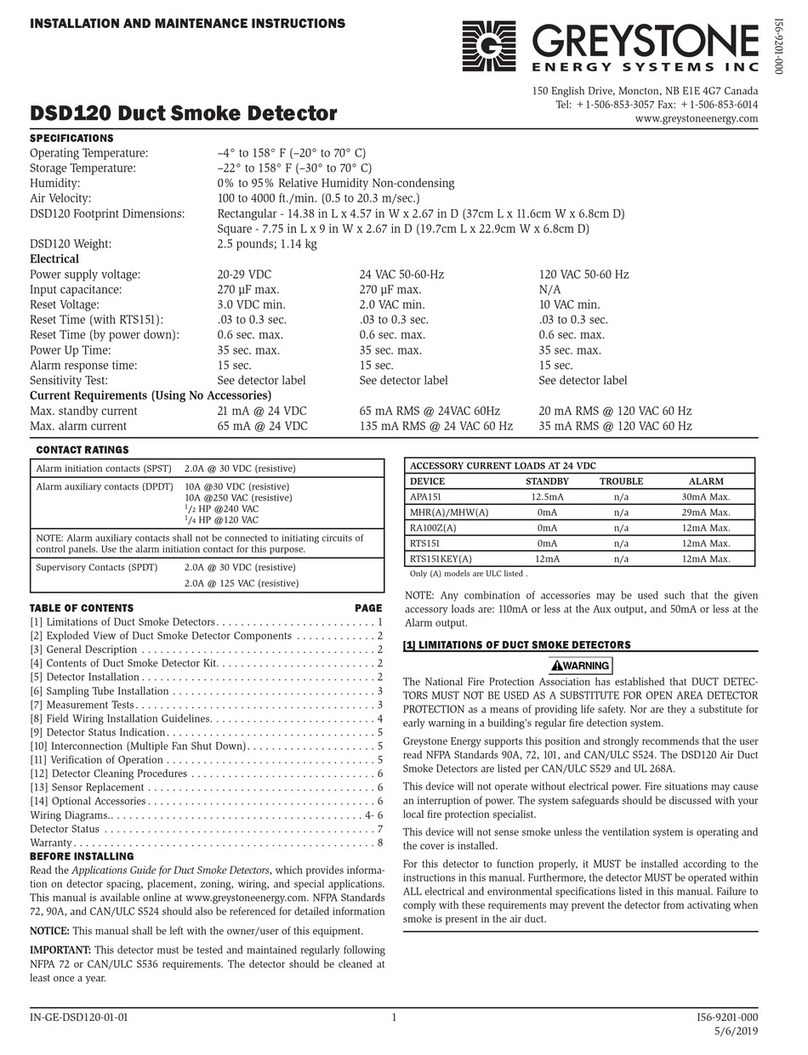2
Telepítési útmutató
1. Kerülje az érzékelő telepítését állandó füst, por, olaj, magas páratartalom vagy erős
szél esetén(>5m/s)
2. Válassza ki a megfelelő pozíciót az érzékelőnek , általában a védett terület helyének
felső részén.Rögzítse az érzékelő alapját a kiválasztott helyre.
3. Helyezze be az elemet az érzékelőbe.
4. Csavarja rá az érzékelőt az alapra.
5. Végezzen el egy manuális tesztelést, hogy ellenőrizze, hogy megfelelően működik az
érzékelő
Használati előírások
1. Érzékenység tesztelése :Rendszeresen ellenőrizni kell az érzékelő
tesztelését, hogy ne legyen gond a készülékkel.Hogy elvégezzék a mükődési tesztelést
nyomják meg a tesztelési gombot és tartsák lenyomva pár másodpercig. Ha a
riasztójelző gyorsan villog és a buzzer egy riasztói jelt ad le ez azt jelenti, hogy az
érzékelő megfelelően működik.
2. Riasztási mód és buzzer leállítása: amikor a füst sűrűsége eléri az érzékelő
riasztási küszöbét, buzzerul elkezd szólni,és a riasztójelző gyorsan villog.Amikor a füst
sűrűsége csökken, a tesztgombnak nincs hatása.Ha a füst sűrűsége csökken a
riasztási küszöb alá, a tesztelési gomb lenyomásával az érzékelő belép a teszt
üzemmódba. 10 perc után az érzékelő automatikusan visszatér a normál működési
állapotba.
3. Együtt használva egy riasztórendszerrel : amikor az érzékelő egy vezeték
nélküli riasztórendszerhez van kapcsolodva lenyomva a tesztelési gombot riasztást küld
a rendszer központi egységére.
Az érzékelő riasztórendszerbe történő programozásához, nyomják le
hosszasan a tesztelési gombot amikor a rendszer központi egységének eszköz-
tanulási módban van.
5. Ellenőrzés meghibásodás esetén:
Ÿha az érzékelő buzzer-je egy rövid hangod ad le 40 másodpercenként együtt a
riasztójelző villogásával , ez azt jelent, hogy az elem lemerült és ki kell cserélni.
Ÿha az érzékelő buzzer-je 2 rövid hangot ad le 40 másodpercenként együtt a
riasztójelző 2 villogásával , ez azt jelenti, hogy a fotoelektronikus infravörös érzékelő
meghibásodott. Ebben az esetben kérjük forduljanak egy helyi szolgáltatóhozI. Ne
próbálja meg eltávolítani vagy javítani az érzékelőt, hogy elkerülje az egyéb
eseményeket.
Megjegyzés:
ŸTisztítsa meg az érzékelő felülelét egy puha ronggyal félévente, hogy biztosítson egy
jó minöségű érzékenységet. Kérjük távolítsák el az elemet mielőtt elkezdik takaritani
a készüléket.
ŸHa hosszabb ideig nem használja az érzékelőt, távolítsa el a mennyezetről, vegye ki
az elemet és tartsa hűvös, száraz helyen.
ŸA füstérzékelő csökkentheti a katasztrófa mértékét de nem garantálja a 100% -os
biztonságot.
HU




